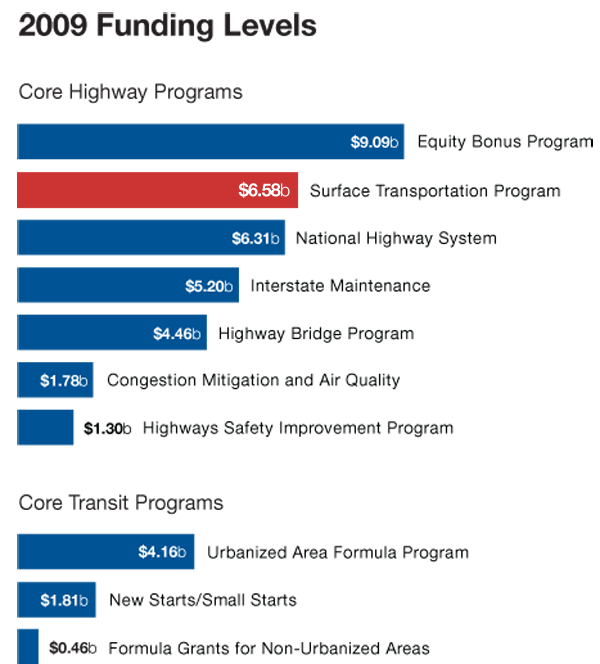Correcting some misinformation on bicycle and pedestrian spending
Bike and pedestrian projects get less than 1.5 percent of federal transportation funding — despite recent misinformation to the contrary.
There’s some misinformation percolating about the size of the transportation enhancements program — the small dedicated program that has funded projects to make biking and walking safer and more convenient for 20 years. Some misleading data has been shared and then propagated in news stories, so we wanted to put up this very simple explainer to help set the record straight — and equip you to help us set the record straight.
There have been news stories and press releases saying that states are required to set aside 10 percent of their transportation funds for things like “like transportation museums, educational programs for pedestrians and the operation of historic transportation facilities.” Two things are incorrect and misleading here.
- The purpose of the program: Though there are 12 eligible uses in the transportation enhancements program — including the others mentioned above — more than half of TE funds are spent to make people on foot or bike safer. People who oppose this program like to cite some of the other eligible uses like highway beautification and transportation museums while neglecting to mention that the majority of the funding is used for just one purpose: making walking and biking safer.
- The size of the program: Most deceptively, this program does NOT make up 10 percent of a state’s transportation dollars that they get from the federal government. Not even close. Each state gets their transportation money from several pots, and one of them — about a quarter of the total — is called the “surface transportation program” (STP). Ten percent of that pot is set aside for enhancements, and about half of that total is spent on biking and walking. Local governments apply for this money, and there are far more applications than there are funds. While TE only accounts for 1.5 percent of transportation funding, it is the largest source of funding for biking and walking facilities– which carry 12 percent of all trips in the United States.
This chart below from our Transportation 101 document should help.
The bars below show the core federal program funding levels for 2009. The bar in red is the surface transportation program. 10 percent of that single bar is where enhancements come from, or about 1.5 percent of all transportation spending. About half of that TE program is spent on biking and walking, and a small bit of funding from a few other programs (Recreational Trails and Safe Routes to School) adds up to the total of a little more than one percent of all transportation dollars spent to make walking and biking safer — though pedestrians make up about 14 percent of all traffic fatalities.





















Pingback: Weekend News Bites — Bike Around Bend
Pingback: Transportation For America » Proposal to fix bridges by taking away safety money won’t solve the problem
Pingback: Streetsblog.net » Proposal to fix bridges by taking away safety money won’t solve the problem